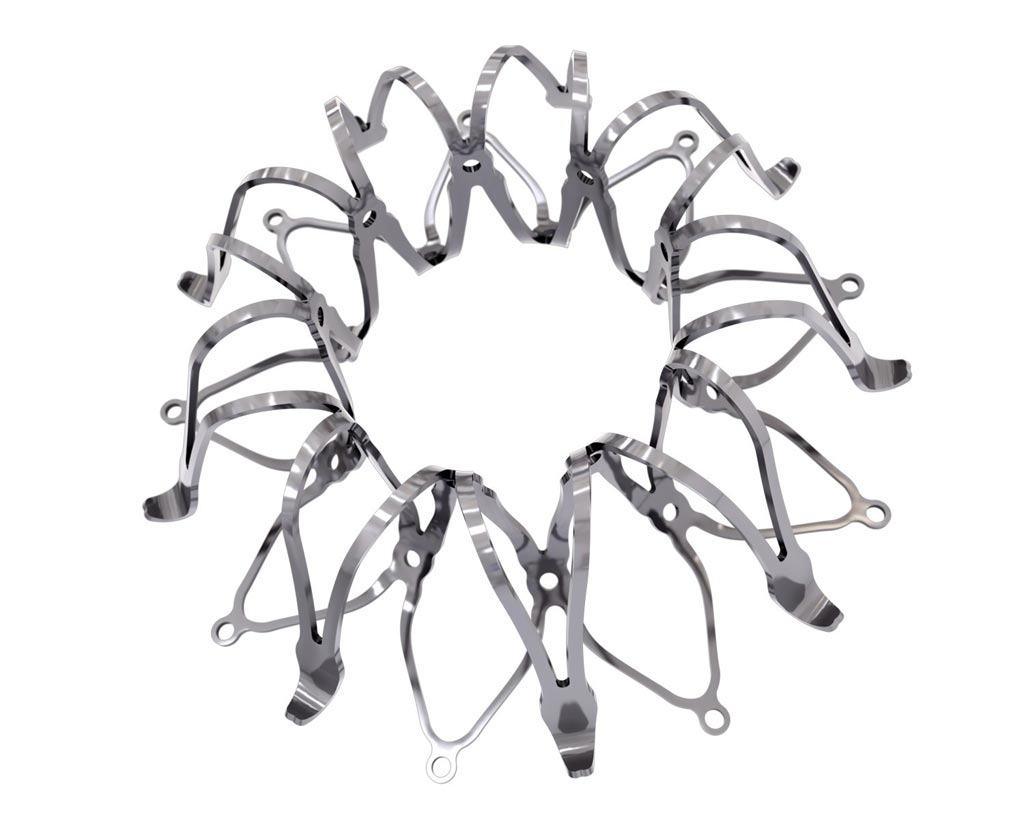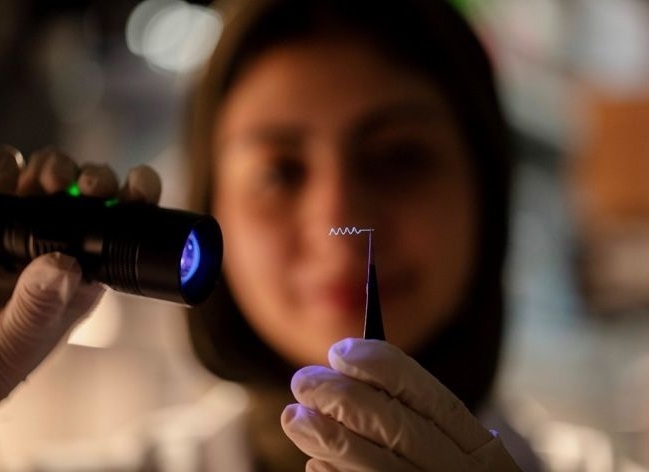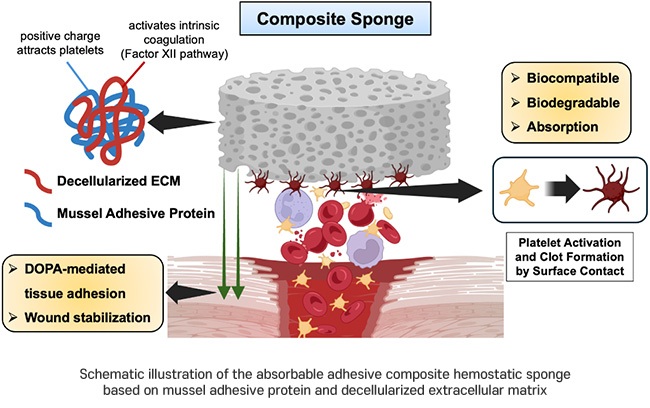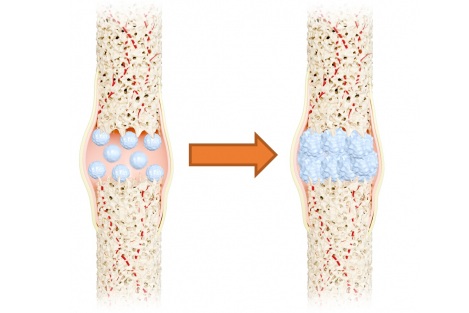Interatrial Shunt Helps Decompress Failing Heart
|
By HospiMedica International staff writers Posted on 24 Oct 2019 |

Image: The Corvia InterAtrial Shunt Device (IASD) (Photo courtesy of Corvia Medical).
A novel implantable cardiac shunt helps treat heart failure (HF) patients with preserved and mid-range ejection fraction.
The Corvia Medical (Tewksbury, MA, USA) Interatrial Shunt Device (IASD) is an innovative transcatheter implantable device designed to help diastolic HF function by forming a channel that connects left and right atria, thus facilitating continuous and dynamic decompression of the left atrium and enabling it to relax at rest and physical activity. Once in place, a permanent passage is created in the septum between the atria, resulting in reduction in HF symptoms, improved quality of life, and reduced hospitalization rates.
The IASD, which has been granted “Breakthrough Device” designation by the U.S. Food and Drug Administration (FDA), is being studied in the REDUCE LAP-HF II study, a large multi-national prospective, double-blind, sham-controlled trial randomizing 608 HFpEF and HFmrEF patients in the United States, European Union, Australia, Japan, and Canada. One-year follow-up data of the IASD clinical study, held in 64 patients implanted at 18 centers, demonstrated shunt patency for all participants who received the implant.
“Receiving Breakthrough Device designation from the FDA underscores the significant unmet need for more effective treatment options for heart failure patients,” said George Fazio, President and CEO of Corvia Medical. “We look forward to continuing our work with the FDA through our ongoing pivotal trial in more than 100 hospitals, and providing the clinical evidence which will accelerate the timeline to bring the IASD to the U.S. market.”
There are two types of HF; HF with reduced ejection fraction (HFrEF, systolic heart failure), and heart failure with preserved or mid‐range ejection fraction (HFpEF/HFmrEF), previously called diastolic heart failure. HFpEF accounts for approximately 50% of all HF, but treatment options are limited, consisting mainly of diuretics and fluid balance control. Although the pathophysiology of HFpEF is complex, many of the symptoms are a result of excessive rises in left atrial pressure, in particular during exercise.
Related Links:
Corvia Medical
The Corvia Medical (Tewksbury, MA, USA) Interatrial Shunt Device (IASD) is an innovative transcatheter implantable device designed to help diastolic HF function by forming a channel that connects left and right atria, thus facilitating continuous and dynamic decompression of the left atrium and enabling it to relax at rest and physical activity. Once in place, a permanent passage is created in the septum between the atria, resulting in reduction in HF symptoms, improved quality of life, and reduced hospitalization rates.
The IASD, which has been granted “Breakthrough Device” designation by the U.S. Food and Drug Administration (FDA), is being studied in the REDUCE LAP-HF II study, a large multi-national prospective, double-blind, sham-controlled trial randomizing 608 HFpEF and HFmrEF patients in the United States, European Union, Australia, Japan, and Canada. One-year follow-up data of the IASD clinical study, held in 64 patients implanted at 18 centers, demonstrated shunt patency for all participants who received the implant.
“Receiving Breakthrough Device designation from the FDA underscores the significant unmet need for more effective treatment options for heart failure patients,” said George Fazio, President and CEO of Corvia Medical. “We look forward to continuing our work with the FDA through our ongoing pivotal trial in more than 100 hospitals, and providing the clinical evidence which will accelerate the timeline to bring the IASD to the U.S. market.”
There are two types of HF; HF with reduced ejection fraction (HFrEF, systolic heart failure), and heart failure with preserved or mid‐range ejection fraction (HFpEF/HFmrEF), previously called diastolic heart failure. HFpEF accounts for approximately 50% of all HF, but treatment options are limited, consisting mainly of diuretics and fluid balance control. Although the pathophysiology of HFpEF is complex, many of the symptoms are a result of excessive rises in left atrial pressure, in particular during exercise.
Related Links:
Corvia Medical
Latest Critical Care News
- Origami Robots to Deliver Medicine Less Invasively and More Effectively
- Improved Cough-Detection Technology Aids Health Monitoring
- AI Identifies Children in ER Likely to Develop Sepsis Within 48 Hours
- New Radiofrequency Therapy Slows Glioblastoma Growth
- Battery-Free Wireless Multi-Sensing Platform Revolutionizes Pressure Injury Detection
- Multimodal AI to Revolutionize Cardiovascular Disease Diagnosis and Treatment
- AI System Reveals Hidden Diagnostic Patterns in Electronic Health Records
- Highly Sensitive On-Skin Sensing Monitor Detects Vitamin B6 and Glucose in Sweat
- Artificial Intelligence Revolutionizing Pediatric Anesthesia Management
- New Device Detects Tuberculosis DNA Directly in Exhaled Air
- New Menstrual Cup Could Detect Infections and Improve Diagnostics
- Engineered “Natural Killer” Cells Could Help Fight Cancer
- Faster Lymph Flow Predicts Better Response to Diuretics in Acute Heart Failure
- New Global Recommendations Aim to End Deaths from Postpartum Hemorrhage
- 'Flat-Line ECG' Indicates Poor Outcomes for Out-Of-Hospital Cardiac Arrest
- New Guidance to Improve Diagnosis and Management of Heart Failure During Pregnancy and Postpartum
Channels
Surgical Techniques
view channel
Novel Glue Prevents Complications After Breast Cancer Surgery
Seroma and prolonged lymphorrhea are among the most common complications following axillary lymphadenectomy in breast cancer patients. These postoperative issues can delay recovery and postpone the start... Read more
Breakthrough Brain Implant Enables Safer and More Precise Drug Delivery
Delivering medication directly to specific regions of the brain has long been a major challenge in treating neurological disorders. Current implants and infusion systems typically reach only one or two... Read morePatient Care
view channel
Revolutionary Automatic IV-Line Flushing Device to Enhance Infusion Care
More than 80% of in-hospital patients receive intravenous (IV) therapy. Every dose of IV medicine delivered in a small volume (<250 mL) infusion bag should be followed by subsequent flushing to ensure... Read more
VR Training Tool Combats Contamination of Portable Medical Equipment
Healthcare-associated infections (HAIs) impact one in every 31 patients, cause nearly 100,000 deaths each year, and cost USD 28.4 billion in direct medical expenses. Notably, up to 75% of these infections... Read more
Portable Biosensor Platform to Reduce Hospital-Acquired Infections
Approximately 4 million patients in the European Union acquire healthcare-associated infections (HAIs) or nosocomial infections each year, with around 37,000 deaths directly resulting from these infections,... Read moreFirst-Of-Its-Kind Portable Germicidal Light Technology Disinfects High-Touch Clinical Surfaces in Seconds
Reducing healthcare-acquired infections (HAIs) remains a pressing issue within global healthcare systems. In the United States alone, 1.7 million patients contract HAIs annually, leading to approximately... Read moreHealth IT
view channel
Printable Molecule-Selective Nanoparticles Enable Mass Production of Wearable Biosensors
The future of medicine is likely to focus on the personalization of healthcare—understanding exactly what an individual requires and delivering the appropriate combination of nutrients, metabolites, and... Read moreBusiness
view channel
Philips and Masimo Partner to Advance Patient Monitoring Measurement Technologies
Royal Philips (Amsterdam, Netherlands) and Masimo (Irvine, California, USA) have renewed their multi-year strategic collaboration, combining Philips’ expertise in patient monitoring with Masimo’s noninvasive... Read more
B. Braun Acquires Digital Microsurgery Company True Digital Surgery
The high-end microsurgery market in neurosurgery, spine, and ENT is undergoing a significant transformation. Traditional analog microscopes are giving way to digital exoscopes, which provide improved visualization,... Read more
CMEF 2025 to Promote Holistic and High-Quality Development of Medical and Health Industry
The 92nd China International Medical Equipment Fair (CMEF 2025) Autumn Exhibition is scheduled to be held from September 26 to 29 at the China Import and Export Fair Complex (Canton Fair Complex) in Guangzhou.... Read more














